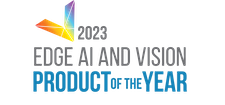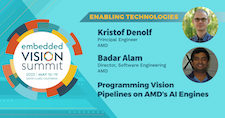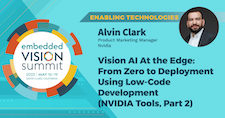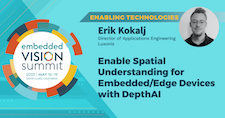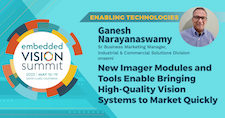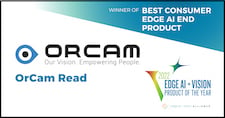| LETTER FROM THE EDITOR |
Dear Colleague,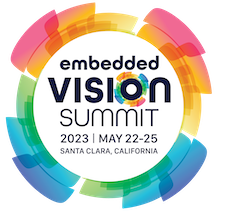
Registration is now open for the 2023 Embedded Vision Summit, coming up May 22-25, 2023 in Santa Clara, California! The Summit is the premier conference and tradeshow for innovators incorporating computer vision and visual or perceptual AI in products. The program is designed to cover the most important technical and business aspects of practical computer vision, deep learning and perceptual AI. Register before December 31 and you can save 35%—the best price you’ll ever be able to get on the Summit! We’re currently creating the presentation program for the Summit, and we invite you to share your expertise and experience with peers at this premier event! To learn more about the topics we’re focusing on this year and to submit your idea for a presentation, check out the Summit Call for Proposals or contact us at [email protected]. We’ve just extended the submission deadline and now will be accepting session proposals through December 23, but space is limited, so submit soon! Next Tuesday, December 13 at 9 am PT, Deci will deliver the free webinar “How to Successfully Deploy Deep Learning Models on Edge Devices” in partnership with the Edge AI and Vision Alliance. The introduction of powerful processors, memories and other devices, along with robust connectivity to the cloud, has enabled a new era of advanced AI applications capable of running on the edge. But system resources remain finite; cost, size and weight, power consumption and heat, and other constraints make it challenging to deploy accurate, resource-efficient deep learning models at the edge. How can you build a deep learning model that is not too complex or large to run on an edge device and makes the most of the available hardware? This technical session is packed with practical tips and tricks on topics ranging from model selection and training tools to running successful inference at the edge. Yonatan Geifman, the company’s Co-founder and CEO, will demonstrate how to benchmark and compare different models, leverage model training best practices, and easily automate compilation and quantization processes, all while using the latest open source libraries and tools. At the conclusion of the webinar, you will have gained practical knowledge on how to eliminate guesswork in significantly improving your edge devices’ performance, boosting runtime speeds while optimizing accuracy for AI-based applications. A question-and-answer session will follow the presentation. For more information and to register, please see the event page.
An independent panel of experts will select one winning entry for each of these categories:
The deadline for entries is December 31. This deadline won’t be extended, so enter today and enjoy the holidays knowing you’ve set your company up for an incredible opportunity! Brian Dipert |
| EFFICIENT CODING FOR VISION PROCESSING |
|
Programming Vision Pipelines on AI Engines Vision AI At the Edge: From Zero to Deployment Using Low-Code Development |
| IMAGE SENSORS, MODULES AND CAMERAS |
|
Enabling Spatial Understanding for Embedded and Edge Devices with DepthAI New Imager Modules and Tools Enable Bringing High-quality Vision Systems to Market Quickly |
| UPCOMING INDUSTRY EVENTS |
|
How to Successfully Deploy Deep Learning Models on Edge Devices – Deci Webinar: December 13, 2022, 9:00 am PT Implementing Advanced AI-based Analytics for Video Management Systems – Hailo Webinar: February 7, 2023, 9:00 am PT Embedded Vision Summit: May 22-25, 2023, Santa Clara, California |
| FEATURED NEWS |
|
Teledyne DALSA Extends Its Falcon Area Scan Camera Series with New 37M and 67M Models Imagination Technologies and Baidu PaddlePaddle Create Open-source Machine Learning Library for Model Zoo NVIDIA Launches IGX Edge AI Computing Platform for Safe, Secure Autonomous Systems Visionary.ai Launches Video Denoiser for Improved Night Vision Algolux Extends Eos Perception Software to Address ADAS and Autonomous Vehicle Depth Limitations |
| EDGE AI AND VISION PRODUCT OF THE YEAR WINNER SHOWCASE |
|
OrCam Technologies OrCam Read (Best Consumer Edge AI End Product) Please see here for more information on OrCam Technologies’ OrCam Read. The Edge AI and Vision Product of the Year Awards celebrate the innovation of the industry’s leading companies that are developing and enabling the next generation of edge AI and computer vision products. Winning a Product of the Year award recognizes a company’s leadership in edge AI and computer vision as evaluated by independent industry experts. The Edge AI and Vision Alliance is now accepting applications for the 2023 Awards competition; for more information and to enter, please see the program page. |


